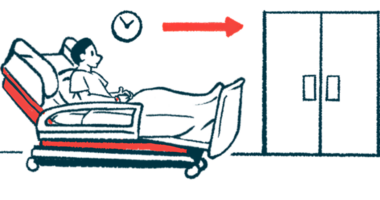Women may need emotional support on road to DBS: US study
Differences found among men, women in deciding on surgery for Parkinson's

Men and women with Parkinson’s disease approach the decision to undergo deep brain stimulation (DBS) distinctively, according to a new U.S. study whose findings are now being used to develop support tools for patients in choosing or not choosing to have the surgery.
For example, the study found that women may benefit from more emotional support and connecting with others who have undergone the experience of DBS. Conversely, men generally find clear, detailed information about risks and benefits more helpful when deciding on whether to undergo the procedure.
To ensure all patients can make well-informed decisions, regardless of their sex, the researchers highlighted the need for personalized educational resources to be developed to cater to the specific needs and preferences of people with Parkinson’s of different genders.
“The main gender difference in the decision-making process was a lack of support that women felt during decision-making and after surgery,” the team wrote, noting that, among female patients, “many expressed that knowing more of what to expect would have made them more comfortable with the procedure and recovery.”
The study, conducted by researchers at the University of Colorado and titled “How Women and Men with Parkinson’s Disease Approach Decision-Making for Deep Brain Stimulation Surgery,” was published in the journal Movement Disorders Clinical Practice.
Fewer than one-third of Parkinson’s patients undergoing DBS are women
DBS is an invasive surgery in which thin wires, called leads, are placed in specific regions of the brain and connected to a small device — a neurostimulator — in the patient’s chest. This device sends electrical signals to the brain that regulate its activity, which has been shown to ease motor symptoms characteristic of Parkinson’s.
Because it’s invasive, DBS usually requires careful monitoring before and after surgery. It’s often used for people with tremor unresponsive to other treatments, or for those with severe motor complications from medication wearing off. DBS may also help when a medication causes intolerable side effects.
While it’s an effective treatment for Parkinson’s, women comprise far fewer than one-third of patients — 23% to 30% — choosing the surgery, even though the disease affects both sexes equally. One reason for this difference, research has suggested, could be that men and women approach the decision to undergo DBS differently.
To learn more, a team of U.S. researchers in Colorado looked at how men and women with Parkinson’s make decisions about DBS, focusing on what information patients need, how they balance risks and benefits, and how they ultimately make their choice.
The researchers interviewed 33 adults with Parkinson’s — 17 men and 16 women — who had considered DBS in the prior three years. The patients had a mean age of 63.2 and had lived with Parkinson’s for an average of 10.2 years. Seven of the patients, specifically five men and two women, had ultimately decided not to undergo DBS.
Answers to the interviews centered around four common themes: Both men and women valued hearing personal experiences, their motivations for DBS were often very personal, their decision took years, and trusting the surgeon helped overcome fear of surgery.
“The decision to [undergo] DBS surgery was often a long process that started soon after medication escalation with intolerable side effects and included a cycle of information gathering and weighing the risks and benefits,” the researchers wrote.
Most patients received information from their neurologist and online research, such as YouTube, webinars, and websites on Parkinson’s. Many talked to others who had undergone DBS, and those who didn’t often reported that they wished they had.
“It would help to be able to talk to somebody that had gone through it and ask ‘How did you feel after the third surgery when they put the wires and battery in?’ Just those types of questions that you get an answer from somebody instead of reading about it,” said one patient, who decided to undergo DBS.
Men favor facts, women support in making decision on DBS, per study
Differences in the decision-making process between men and women were clear, the researchers noted. Overall, the women interviewed said they had less support both in making their decision and during recovery. Many female patients also wanted to talk to other women who had undergone DBS, “just sitting down and having coffee with someone who went through it,” one woman said.
Many patients chose surgery to control symptoms, reduce medication, and improve quality of life. Most wanted independence and to enjoy activities again. “The offer to have a life back was great,” one patient said. Those who avoided surgery were mainly concerned about risks, anesthesia, and potential complications.
Women often lacked support during decision-making and after surgery, unlike men, who relied on spouses for help. “My wife did a great job on finding more information,” one male patient said. “She got me in touch with some people in a forum where I was able to ask questions about how DBS was.”
The researchers found that many of the women interviewed lived alone and gathered information either on their own or with the help of family and friends. When weighing risks and benefits, women didn’t only consider risks and benefits to themselves, but also worried about becoming a burden to others.
Only women queried the impact of the procedured on their appearance — specifically, the researchers noted, “having their hair shaved as part of surgery.”
“One of their main questions was about the appearance of their hair and scalp after surgery … although it may not have changed their decision,” the researchers wrote.
Evidence from this study is being used to develop decision support tools to improve the decision-making process around DBS for patients with [Parkinson’s], and especially for women.
Men, meanwhile, generally cared more about having detailed risk and benefit data and were less focused on emotional support. According to one male patient: “I was primarily interested in the risk/benefit ratio in terms of what’s the downside of it, what’s the upside of it, and what I can gain from it.”
Overall, according to the researchers, the insights gained from this study may help in developing more tailored educational tools for patients.
“These findings underscore the need to consider individual information needs, values, preferences, and support when discussing DBS as a treatment option,” the researchers concluded. “Evidence from this study is being used to develop decision support tools to improve the decision-making process around DBS for patients with [Parkinson’s disease], and especially for women.”








